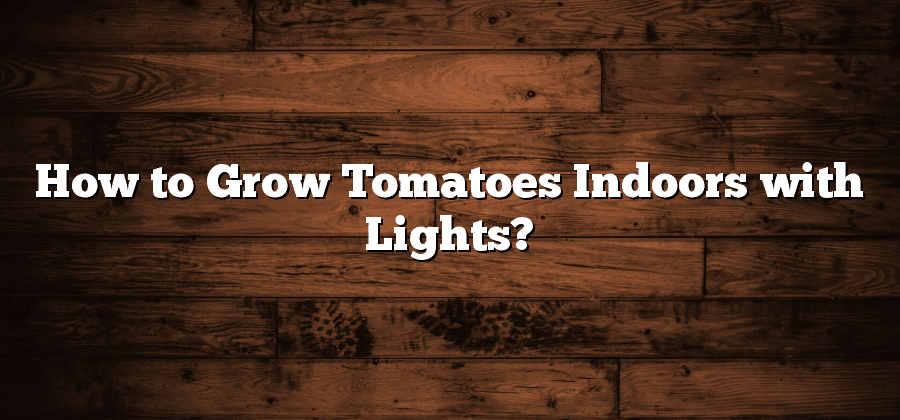Selecting the Right Tomato Varieties for Indoor Growth
When it comes to selecting the right tomato varieties for indoor growth, there are several factors to consider. First and foremost, the size and space available in your indoor garden will play a key role in determining the ideal tomato variety. Compact or determinate varieties like ‘Cherry Cascade,’ ‘Window Box Roma,’ or ‘Patio Princess’ are perfect for smaller spaces, as they grow more bush-like and do not require extensive staking or trellising.
In addition to considering the space available, you should also think about your personal preferences and taste. Do you prefer sweet and juicy tomatoes or ones with a tangier flavor? Are you looking to grow tomatoes for slicing or for making sauces and pastes? Varieties like ‘Sweet 100,’ ‘Sunrise Bumblebee,’ ‘San Marzano,’ and ‘Roma’ are all popular choices for their delicious taste and versatility in the kitchen. By carefully selecting the right tomato varieties, you can ensure a bountiful harvest and enjoy the fruits of your labor in the comfort of your own home.
Understanding the Importance of Lighting for Indoor Tomato Growth
Lighting plays a crucial role in the successful growth of tomatoes indoors. As tomato plants are naturally adapted to receive direct sunlight in outdoor environments, replicating their light requirements is essential for indoor cultivation.
Tomato plants require an adequate amount of light to trigger photosynthesis, the process by which they convert light energy into chemical energy necessary for growth. Without sufficient light, the plants may become weak, leggy, and produce fewer fruits. Therefore, it is imperative to provide the right lighting conditions to ensure the healthy development of indoor tomato plants.
Choosing the Ideal Lighting System for Indoor Tomato Cultivation
When it comes to indoor tomato cultivation, selecting the ideal lighting system is crucial for successful growth. Proper lighting provides the necessary energy for photosynthesis, which is essential for the plants to produce healthy foliage, flowers, and fruit.
LED (Light Emitting Diode) grow lights are a popular choice among indoor tomato growers. They are energy-efficient, emit low heat, and can be customized to provide the specific light spectrum that tomatoes require for optimal growth. LED lights can be programmed to deliver a combination of blue and red light, which promotes vegetative growth and flowering respectively. Additionally, LED lights have a long lifespan, reducing the need for frequent replacements and saving costs in the long run.
When selecting a lighting system for indoor tomato cultivation, it is important to consider the intensity and coverage area of the lights. Tomato plants need approximately 14-16 hours of light each day, so it is essential to choose a system that can provide consistent and even lighting throughout the growing area. The lighting system should also have adjustable height options to accommodate the plants’ growth, ensuring that the light is always at the proper distance from the foliage. This will prevent the plants from becoming too leggy or getting burnt by intense light.
Setting Up the Proper Light Placement and Distance for Tomato Plants
Once you have chosen the ideal lighting system for your indoor tomato cultivation, it is crucial to set up the proper light placement and distance for your tomato plants. Proper light placement ensures that the plants receive an equal balance of light, promoting uniform growth and preventing any shading or uneven growth patterns. Placing the lights too far away can result in weak, leggy plants, while placing the lights too close may cause heat stress or leaf burn.
To achieve the optimal light placement, the lights should be positioned approximately 6-12 inches above the tomato plants. This distance allows the plants to receive sufficient light without causing any harm. Additionally, it is recommended to position the lights in a way that provides even coverage to all parts of the plant. This can be achieved by using multiple light fixtures and adjusting their positions to ensure that each plant receives an equal amount of light.
Providing the Optimal Temperature and Humidity for Indoor Tomato Growth
Tomatoes are sensitive plants that require specific temperature and humidity conditions to thrive indoors. Creating the optimal environment for their growth is crucial to ensure healthy and productive tomato plants. Maintaining a consistent temperature range between 70°F and 80°F (21°C – 27°C) is ideal for indoor tomato cultivation. This temperature range promotes germination, root development, and overall plant growth. Avoiding drastic temperature fluctuations is important, as it can stress the plants and inhibit their ability to produce fruit.
Humidity levels also play a critical role in indoor tomato growth. Tomatoes prefer a humidity range between 50% and 70%. In environments with low humidity, tomato plants may exhibit symptoms like wilting and dry leaves, while high humidity levels can lead to fungal diseases, excessive leaf growth, and poor fruit development. To maintain the optimal humidity, consider using a humidifier or placing trays of water near the plants to increase moisture levels. Additionally, ensuring proper air circulation within the growing area can help prevent the buildup of excess humidity and reduce the risk of diseases.






